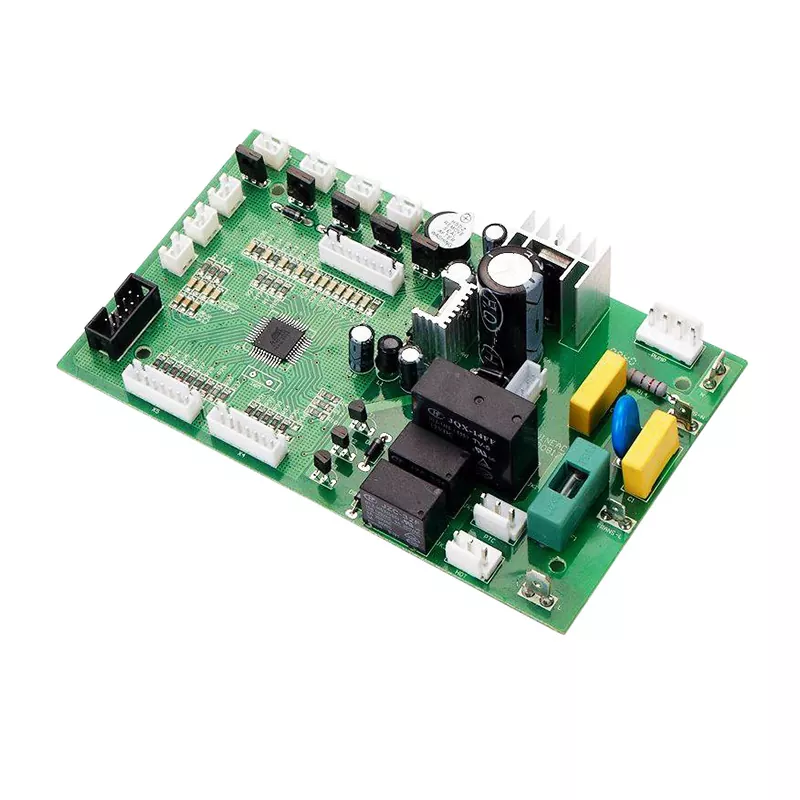- English
- Español
- Português
- русский
- Français
- 日本語
- Deutsch
- tiếng Việt
- Italiano
- Nederlands
- ภาษาไทย
- Polski
- 한국어
- Svenska
- magyar
- Malay
- বাংলা ভাষার
- Dansk
- Suomi
- हिन्दी
- Pilipino
- Türkçe
- Gaeilge
- العربية
- Indonesia
- Norsk
- تمل
- český
- ελληνικά
- український
- Javanese
- فارسی
- தமிழ்
- తెలుగు
- नेपाली
- Burmese
- български
- ລາວ
- Latine
- Қазақша
- Euskal
- Azərbaycan
- Slovenský jazyk
- Македонски
- Lietuvos
- Eesti Keel
- Română
- Slovenski
- मराठी
- Srpski језик
What are the environmental impact considerations for Rigid-Flexible PCBs?
2024-11-14

What are the key advantages of using Rigid-Flexible PCB?
There are several key advantages to using Rigid-Flexible PCB, including:
- Better resistance to vibration and shock due to the combination of rigidity and flexibility
- Lower overall weight and size of the product, allowing it to be used in smaller products
- Reduced assembly time and costs due to fewer interconnections needed
- Improved reliability due to fewer interconnected parts, making it less prone to failure
What are the environmental impact considerations of Rigid-Flexible PCBs?
One of the main environmental concerns with the use of Rigid-Flexible PCB is the disposal of the materials that make up the board. These boards contain several layers of rigid and flexible materials, making recycling and disposal more difficult. Additionally, the process of manufacturing these boards typically involves the use of chemicals that can have a negative impact on the environment if not disposed of properly.
How can the environmental impact of Rigid-Flexible PCBs be minimized?
To minimize the environmental impact of Rigid-Flexible PCBs, manufacturers can use more eco-friendly materials and manufacturing processes. This includes using materials that are easier to recycle or dispose of, reducing the use of hazardous chemicals in the manufacturing process, and implementing better waste management practices.
What regulations are in place to manage the environmental impact of PCBs?
The European Union has implemented several regulations surrounding the use and disposal of PCBs, including the Restriction of Hazardous Substances (RoHS) directive, and the Waste Electrical and Electronic Equipment (WEEE) directive. These regulations aim to limit the use of hazardous materials in electronics and encourage responsible disposal and recycling practices.
What steps can individuals take to reduce the environmental impact of PCBs?
Individuals can take steps to reduce the environmental impact of PCBs by properly disposing of electronic devices containing PCBs, making sure that e-waste is recycled or disposed of properly, and supporting companies that use eco-friendly manufacturing processes and materials.
In conclusion, Rigid-Flexible PCBs offer a range of benefits for those who use them, but it is important to consider the environmental impact of their production and disposal. By taking steps to minimize the impact of Rigid-Flexible PCBs, we can ensure that these products are sustainable and valuable for years to come.
Shenzhen Hi Tech Co., Ltd. is a leading supplier of Rigid-Flexible PCBs with a focus on sustainability and eco-friendly manufacturing practices. Our team is committed to providing the highest quality products while minimizing the environmental impact of our manufacturing processes. To learn more about our products, visit https://www.hitech-pcba.com or contact us at Dan.s@rxpcba.com
References
黄展鸿, 纪耀辉, 江毅强. "柔性刚性电路板的设计研究与应用[J]." 电气制造业, 2015.
R. W. Johnson, J. P. Kimball, L. Wu, et al. "Stress analysis, design of experiments, and fatigue testing of a flexible-rigid multilayer printed wiring board.[J]." Electronic Components and Technology Conference, 2000: 245-249.
Z. C. Chen, S. C. Hu, C. M. Liu, et al. "Developing phase change material board for rigid-flexible printed circuit boards with improved thermal management.[J]." International Journal of Heat and Mass Transfer, 2015, 81: 103-114.
W. S. Lin, Z. Y. Huang, N. H. Liu, et al. "Modeling and Fabrication of a Miniaturized Flexible-Rigid PCB-Based Capacitive Humidity Sensor with Improved Sensitivity.[J]." IEEE Sensing Journal, 2016, 16(5): 1524-1531.
周峰, 易勇, 肖俊生, et al. "利用金属靶材加工柔性刚性电路板技术研究[J]." 软件, 2015.



